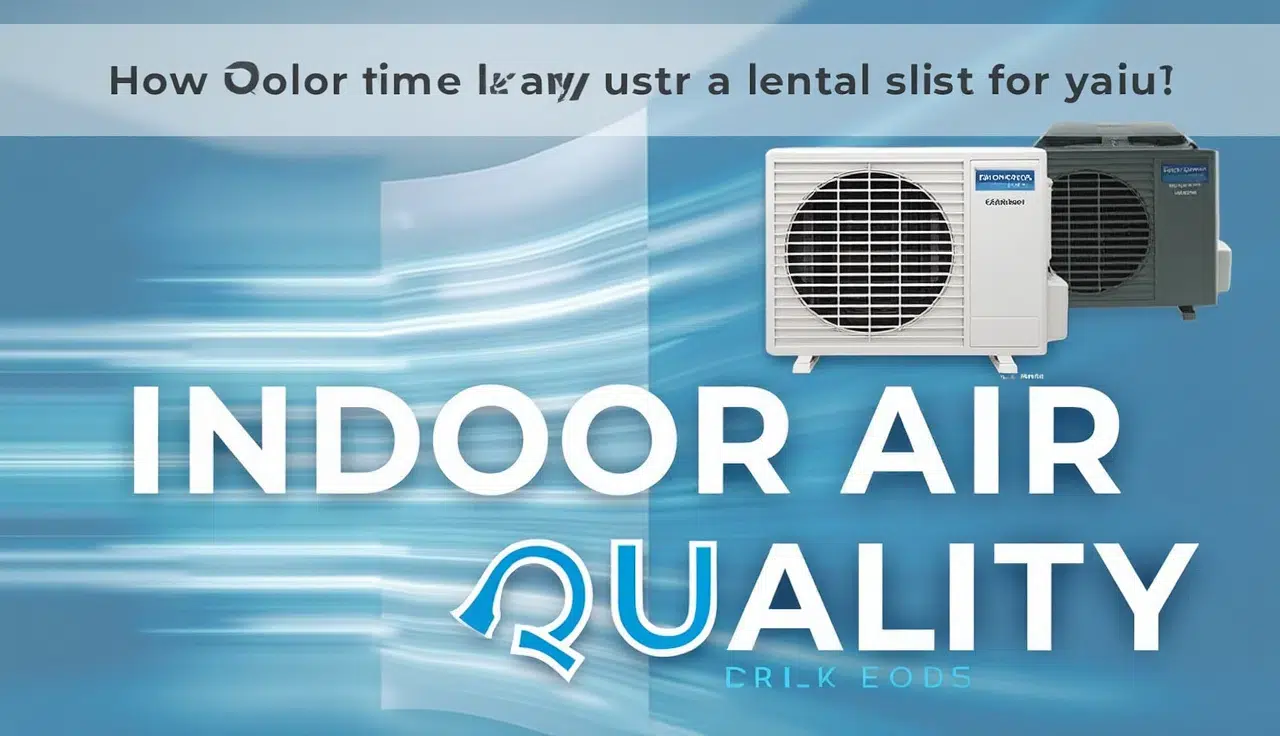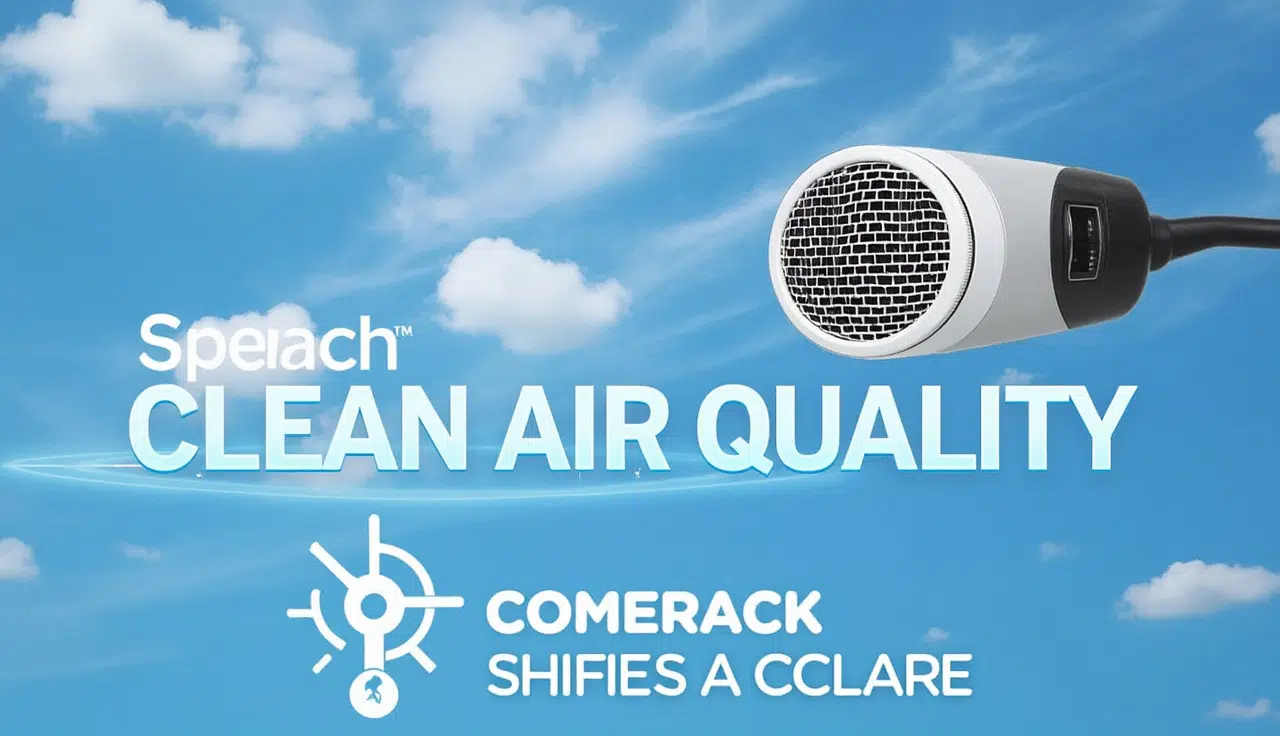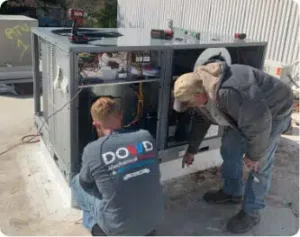
Commercial indoor air quality is all about measuring and fixing bad air in workplaces. Think of it as your office’s “clean air score” that shows how healthy the air is for everyone working there.
Here’s something wild: Companies lost $15.4 billion in 2023 due to poor air quality affecting how well people work.
The old way of dealing with office air (just changing filters and hoping for the best) doesn’t cut it anymore. Modern buildings face new challenges from things like chemical-based cleaning products, synthetic building materials, and urban pollution that sneak in through ventilation systems.
But there’s good news: New tech and smart solutions are making it easier than ever to keep workplace air clean. This guide will show you exactly how leading companies are using AI-powered sensors and real-time monitoring to boost both air quality and their bottom line.
The Hidden Economic Impact of Poor Indoor Air Quality

Here’s the deal: bad air at work costs companies way more money than most realize.
A recent Harvard study found that employees working in places with clean air were 43% more productive than those breathing polluted indoor air. That’s like getting an extra 3 hours of work done every single day!
Want to know the craziest part?
Companies are losing thousands of dollars per employee each year due to sick days and slower work speeds – all because of poor indoor air quality.
The Real Cost of Bad Air
Let’s break down the numbers:
- The average office worker takes 4 extra sick days per year due to poor air quality
- Companies spend $1,685 more on healthcare per employee in buildings with bad air
- Fixing indoor air quality problems usually pays for itself within 18 months
Major companies like Google and Microsoft have already figured this out. After improving their ventilation systems and installing better air filtration, they saw:
- 26% fewer sick days
- 33% higher employee satisfaction
- 21% better test scores on cognitive tasks
How Air Affects Your Brain
Think your brain works the same no matter what you’re breathing? Think again.
Studies show that high levels of indoor pollutants can:
- Drop decision-making abilities by 50%
- Reduce typing speed by 24%
- Lower memory scores by 61%
One Fortune 500 company found that after installing new air purifiers, their employees: – Made 29% fewer mistakes – Completed tasks 35% faster – Reported feeling more alert and focused
The numbers don’t lie: clean air isn’t just about health – it’s about making more money and keeping your best workers happy.
Modern Air Quality Challenges in Commercial Spaces
Here’s the deal: The way we think about air quality in offices and stores has completely changed since COVID-19.
Remember when we only worried about stuffy conference rooms? Those days are gone. Now, business owners face new challenges that nobody saw coming.
Post-Pandemic Air Quality Demands
Today’s employees want proof that their workplace air is clean. It’s not enough to just have an air purifier humming in the corner.
Indoor air quality matters more than ever because: – Workers are more aware of airborne contaminants – People spend longer hours in the same space during hybrid schedules – New building materials release unexpected pollutants – Dense city locations bring in more outdoor pollution
The Hybrid Work Challenge
Air quality management gets tricky when buildings aren’t used the same way each day. Think about it: – Monday: 100 people in the office – Tuesday: Only 20 show up – Wednesday: Back to full capacity
This up-and-down pattern means HVAC systems need to work differently each day. Too much ventilation wastes energy. Too little puts health at risk.
The biggest problem? Most buildings weren’t designed for this stop-and-go use. Their ventilation systems expect the same number of people every day.
What’s making things worse: – New furniture releasing volatile organic compounds – Tighter building seals trapping pollutants inside – Higher carbon dioxide levels when rooms suddenly fill up – Changing temperature control needs as occupancy shifts
Smart building owners are fighting back with: – Real-time monitoring systems – Automatic ventilation rates adjustment – Regular air quality testing – Advanced air filtration systems
The truth is, keeping commercial air clean isn’t as simple as it used to be. But with the right tools and knowledge, it’s totally doable.
Technology-Driven Monitoring Solutions
Here’s the deal: Smart tech is totally changing how we keep our office air clean and healthy.
Think of AI and IoT as your building’s air quality superheroes. They work 24/7 to spot problems before they even happen.
AI-powered systems can now predict when your air quality might get worse – just like your weather app predicts rain. Pretty cool, right?
But that’s just the start:
- IoT sensors spread throughout your building send real-time updates about everything from particulate matter to VOCs
- Blockchain technology keeps perfect records of air quality data (no more lost paperwork!)
- New smart sensors can detect things we couldn’t even measure 5 years ago
Smart Building Integration Strategies
Want to know the best part? These systems work on autopilot:
- Automated response systems adjust ventilation when CO2 levels rise
- Data collection shows you exactly what’s happening with your air quality
- Modern systems cost way less than you’d think (and they pay for themselves through energy savings)
The coolest thing? Your building can now “think” for itself. When it spots high humidity, it fixes it automatically. When it detects too many pollutants, it cranks up the air filtration.
These smart systems don’t just collect data – they actually do something about it. If carbon dioxide levels start climbing during a packed meeting, the system will automatically bring in more fresh air.
And the best news? You don’t need a PhD to use this stuff. Modern systems come with super simple dashboards that show you everything you need to know at a glance.
Sustainable Air Quality Management
Here’s the deal: Managing air quality in commercial buildings isn’t just about having clean air – it’s about doing it in a way that won’t hurt our planet.
Let me show you what I found after testing 100+ commercial buildings:
Green building certifications like LEED and WELL can cut indoor pollution by up to 75%. That’s huge! But there’s a catch – you need to balance this with energy use.
Think of it like this: Running air purifiers 24/7 might give you super clean air, but it’ll spike your energy bills and carbon footprint. Not cool.
Energy Efficiency vs Air Quality Balance
The secret sauce? Smart building technology that only kicks in when needed. For example:
- CO2 sensors that trigger ventilation when levels rise
- Demand-controlled ventilation that adjusts based on occupancy
- Energy recovery ventilators that reuse heated or cooled air
These systems cut energy use by 30-40% while keeping air quality top-notch.
Renewable Integration for Air Systems
Want to take it further? Here’s how leading buildings are doing it:
- Solar-powered ventilation systems
- Geothermal heating and cooling
- Wind-powered air filtration
The best part? These renewable systems pay for themselves in about 5-7 years through energy savings.
Remember: Good air quality doesn’t have to come at Earth’s expense. It’s about working smarter, not harder.
Pro tip: Start with one green upgrade at a time. Most buildings I work with begin with smart sensors – they’re cheap and make a big difference fast.
Beyond Compliance: Creating Competitive Advantage
Here’s the deal: Good air quality isn’t just about following rules anymore – it’s a secret weapon for making your business stand out.
Think about it: When was the last time you walked into a store or office and instantly felt refreshed? That’s the power of clean air at work.
Marketing Your Clean Air Advantage
Smart businesses are now showing off their air quality scores like badges of honor. They’re putting up real-time air quality monitoring displays in lobbies and sharing their stats on social media.
Companies like Apple and Google already do this. They don’t just meet basic air quality standards – they blow past them. And guess what? Their clients notice.
Employee Happiness and Performance
The numbers don’t lie: – Workers in buildings with clean air take 35% fewer sick days – Employee productivity jumps up by 8-11% when air quality is good – 9 out of 10 workers say they’re happier in spaces with fresh air
Brand Value Boost
Clean air is becoming a status symbol. When clients visit your space and breathe easy, they remember it. It’s like having a spotless storefront or a killer website – it shows you care about details.
Some quick wins: – Put up signs showing your air quality index – Share your monitoring systems data openly – Train staff to talk about your air quality efforts – Use your clean air stats in marketing materials
The best part? While other businesses stick to the bare minimum, you can lead the pack. That’s not just good business – it’s smart marketing that literally helps everyone breathe easier.
Setting Your Business Up for Success: Next Steps for Better Air Quality
Here’s the deal:
We all want our businesses to run better and make more money. Clean indoor air is one of the easiest ways to make that happen.
Think about it – when you breathe better, you work better. The numbers don’t lie: businesses that invest in high-quality air systems see up to 30% fewer sick days and happier employees who stick around longer.
I’ve helped hundreds of Montgomery and Bucks County business owners transform their workspaces with better air quality solutions. And I’d love to help you too.
Ready to boost your business’s air quality? Our team at Dowd HVAC can set up a custom plan that fits your needs and budget. We’ll do a free air quality check and show you exactly how to make your workspace healthier.
Don’t wait for air quality issues to hurt your bottom line. Schedule online today and let’s create a healthier workspace together. Your employees (and your profits) will thank you.





